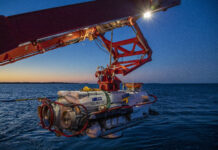Knowing there’s hope
Tim Guest
Submarine rescue systems, both new and old, along with related, advanced equipment and technologies, offer the undersea world of submariners more reassurance of being rescued from a disabled submarine than ever. Yet, constant training and practice in the use of such systems are required to ensure ‘time to first rescue’ is minimised.
This article takes look at pioneering and latest submarine rescue systems in the context of recent developments, their use with allied navies as part of the NATO Submarine Rescue System (NSRS) – as well as how these systems are regularly put to the test on joint naval exercise.
100-year-old concept in use today
There’s a piece of equipment, conceived almost 100 years ago, that marks the true beginning of submarine rescue systems (SRS), but which, today, is still in use with the Italian, Turkish and US navies. Their current versions of this simple, though effective and reliable submarine rescue chamber (SRC), have, with some modifications over the years, kept very much to the original design, and the fact that it’s still in use makes some historical background more than worthwhile.

During the 1920s in the US, two submarine accidents, that of the USS S-51/SS 162, lost after a collision in 1925 with the loss of 34 members of it 37-man crew, and the December 1927 sinking of the USS S-4/SS 109 in the waters off Massachusetts following a collision with a Coast Guard destroyer; the tragedy of this latter event was that the crew survived the collision and subsequent sinking, but suffocated while attempts at rescue were being made. Following the first incident, it was Lieutenant Commander Charles Momsen – inventor of the Momsen Lung – who, in 1926, proposed the idea of an SRC to the then US Bureau of Construction and Repair. It was only after the 1927 episode, however, that the initiative gathered further support and began development. It was one Lieutenant Commander Allan McCann, however, who was put in charge of implementing his colleague’s design, an important decision, which allowed Momsen time to focus on the development of his ‘Momsen Lung’, a personal breathing apparatus to enable individual submariners to escape from a disabled submarine at depth.
The first SRC was completed and entered service with the US Navy (USN) in 1930, named the McCann Rescue Chamber, and comprised a closed upper compartment maintained at atmospheric pressure and an open lower compartment flooded at ambient sea pressure. Horizontal bulkheads, watertight hatches, 120 m of steel cable, (which has increased over time), for lowering the capsule, and associated reels, air motors, as well as electric and communications cables, air/CO2 hoses, and crucial rubber gaskets, enabled to chamber to be lowered to a submarine to form a watertight connection under pressure, over the sub’s escape hatch. A diver accompanied, or preceded, the capsule to a sub to fasten its haul-down cable to the submarine and help guide the capsule into place. Once mated, water in the capsule’s lower compartment clears into its ballast tanks and pressurised air from the lower chamber vents to the surface via the upper chamber. This results in the equalisation of pressure between the rescue chamber and submarine, so the hatches between the two vessels can be opened safely and the crew rescued.
This whole sequence of events was put the test in earnest on 24 May 1939 to save the surviving 33 members of the 59-man crew trapped aboard the USS Squalus (SS 192), which had sunk the day before during a training exercise. Lying at a depth of approximately 75 m, it took four trips to bring the 33 survivors to the surface and a further trip to confirm the remaining crew had perished.
Today’s versions function in much the same way as outlined above and as used in the Squalus rescue, this age-old, simple McCann SRC, with its dry weight of approximately 9,800 kg, but only 454 kg when buoyant in water; however, it does have its limitations, which make these chambers only suitable for ‘simple’ rescues, not that any such rescue should be termed such. However, under severe ocean states, or if a submarine is too deep, i.e., below 260 m, or lying at an angle, a McCann SRC will be unable to effect any rescue. Indeed, crew/survivor transfer under pressure (TUP) is also something the system cannot support.
All that said, McCann SRCs remain assets in the submarine-rescue portfolios of the aforementioned three NATO navies, whether aboard dedicated Mother Ships (MOSHIPs), or as air-transportable assets – as in the case of the USN’s Submarine Rescue Chamber Flyaway System (SRCFS), when it would be used with a Vessel of Opportunity (VOO), which acts as the MOSHIP, having been pre-identified as a vessel able to handle such a shallow submarine rescue, with little modification required.
Momsen would, no doubt, have been pleasantly surprised, had anyone told him all those years ago, that his basic rescue bell design would still be in operation nearly 100 years later.
Time is the enemy
But whether a McCann SRC, or other deeper-diving modern submarine rescue vehicle (SRV), no matter the equipment, ensuring that the shortest ‘time to first intervention’ (TTFI) and ‘time to first rescue’ (TTFR) are achieved, are the goals of all submarine rescue teams. This makes regular, effective submarine-rescue training essential. For NATO, every three years such training manifests in the form of the Alliance’s major, Dynamic Monarch submarine-rescue exercises, with 2024 the year for the latest iteration. Accordingly, Dynamic Monarch 24, (DM 24), duly took place for ten days during September in the cold territorial waters of host-nation, Norway, with the overall exercise led by NATO’s International Submarine Rescue Liaison Office (ISMERLO) involving ten Alliance members: Canada, France, Germany, The Netherlands, Norway, Poland, Sweden, Türkiye, the UK, and the US.
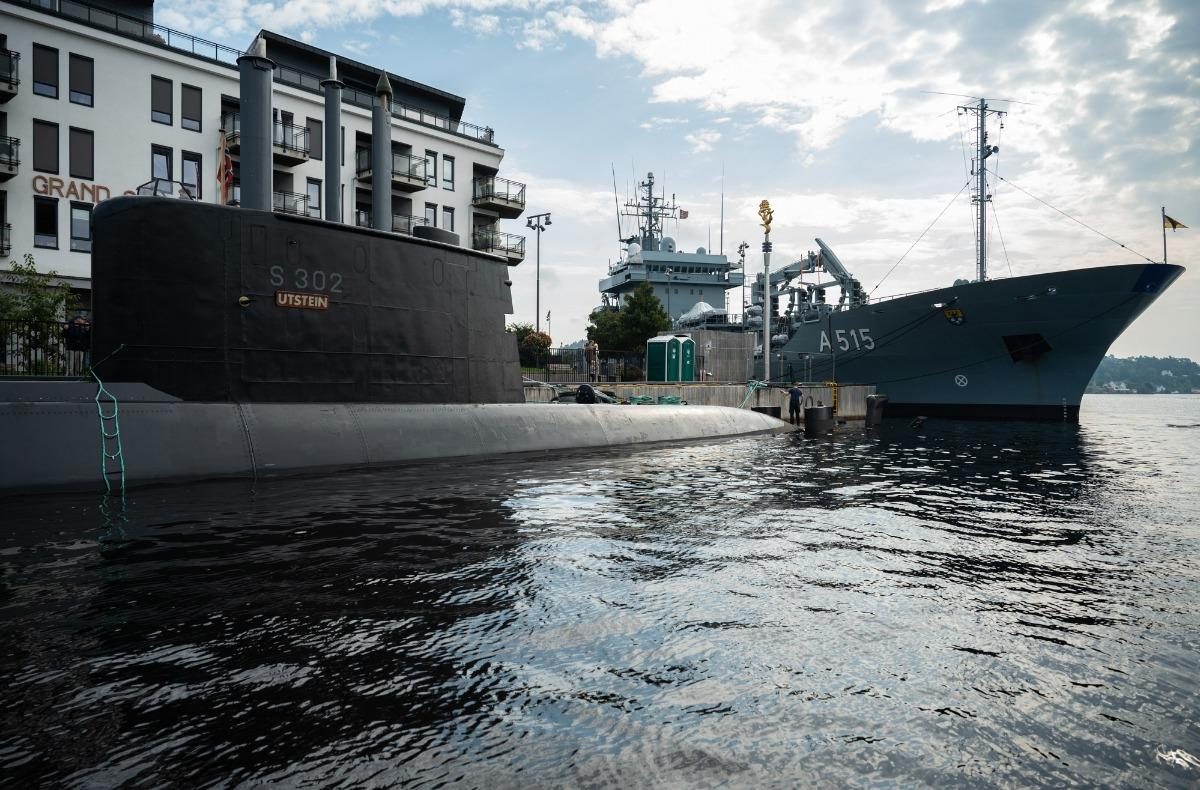
Of the many items of equipment used during the exercise, rescue vehicles included: Sweden’s URF MkII submersible, which, with its three or four operators, can rescue 35 survivors, effectively, the entire crew of a Swedish SSK sub in a single lift, and from depths down to 450 m. Also operating, the NSRS, which can conduct rescues for up to 15 people at a time down to 600 m. Türkiye also deployed its SRC, a typical McCann chamber, which, while restricted to rescues at shallower depths to 260 m, can rescue up to eight survivors per lift, but operate uninterrupted, 24/7, if necessary and if conditions allow.
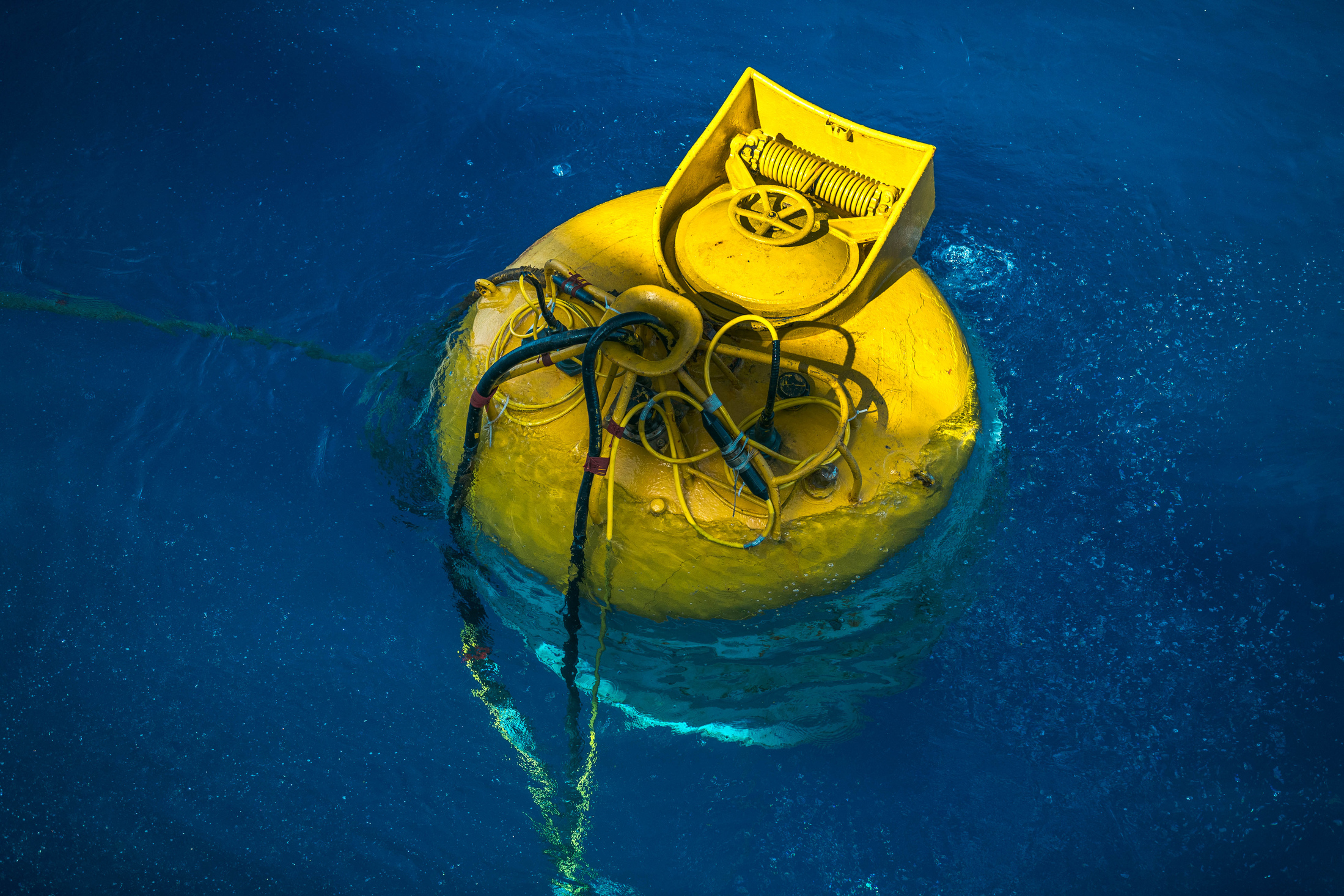
Among the numerous surface and submarine vessels taking part in DM 24, specialist submarine rescue ships from Norway, Sweden and Türkiye – the NoCGV Barentshav, HMSwS Belos, and TCG Alemdar, respectively – also participated. The exercise allowed sub-rescue teams from participating countries to share expertise, standardise procedures and operational strategies, test and hone sub-rescue skills, latest equipment, technology and capabilities, and refine the overall interoperability of the systems and procedures involved. The exercise also incorporated scenarios to test multinational medical teams in treating trauma patients inside special decompression chambers on board the MOSHIPS.
During the exercise, under the watchful eyes of Türkiye’s Undersea Rescue Commander, Rear Admiral (LH) Eren Günay, Turkish Navy submarine rescue ship/MOSHIP, TCG Alemdar, which joined the Turkish fleet on 28 January 2017, worked alongside Sweden’s HSWMS Belos to conduct rescue operations for the crews of Swedish submarine, HSWMS Uppland, and Norway’s HNOMS Utstein sub. The Alemdar’s ROV, TCB Istakoz, was also used in a different scenario to search for a DISSUB, again, the Utstein, but this time transferring a life-support package to the sub crew; it can undertake rescue operations to depths of at least 600 m. The Alemdar handles both shallow, (using its McCann SRC), and deep-water rescues.
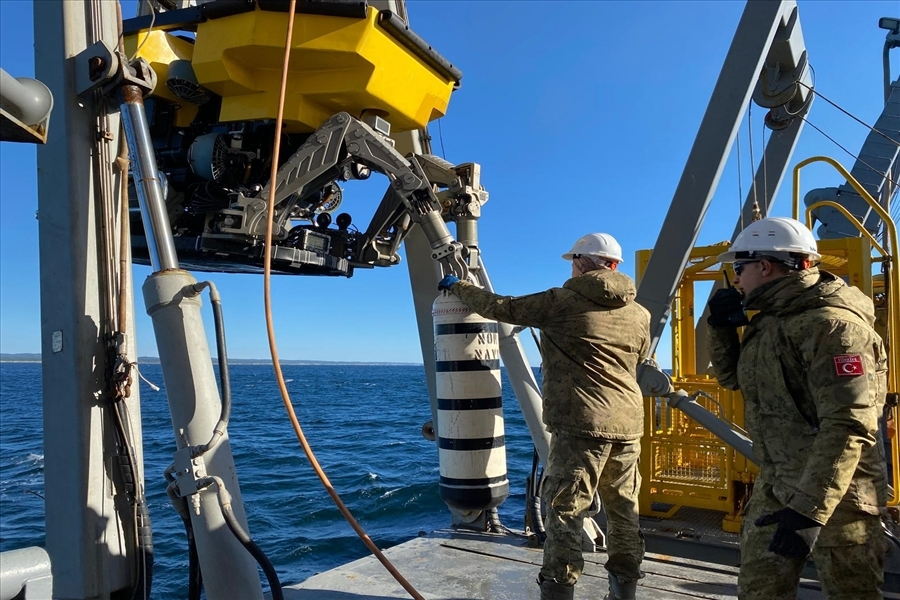
The collective effort during DM 24, is aimed at providing sub-rescue support for all Alliance members, but also the wider, allied world, to ensure rescues can be conducted, anywhere, globally, at any time. Indeed, the NSRS itself, which is jointly owned by France, Norway and the UK, aims to be operational anywhere in the world, 96 hours after first alert to a disabled submarine (DISSUB) incident, deploying from its home location in Scotland at HM Naval Base Clyde. Worth noting, that although established by NATO, ISMERLO theoretically supports all submarine-operating nations.
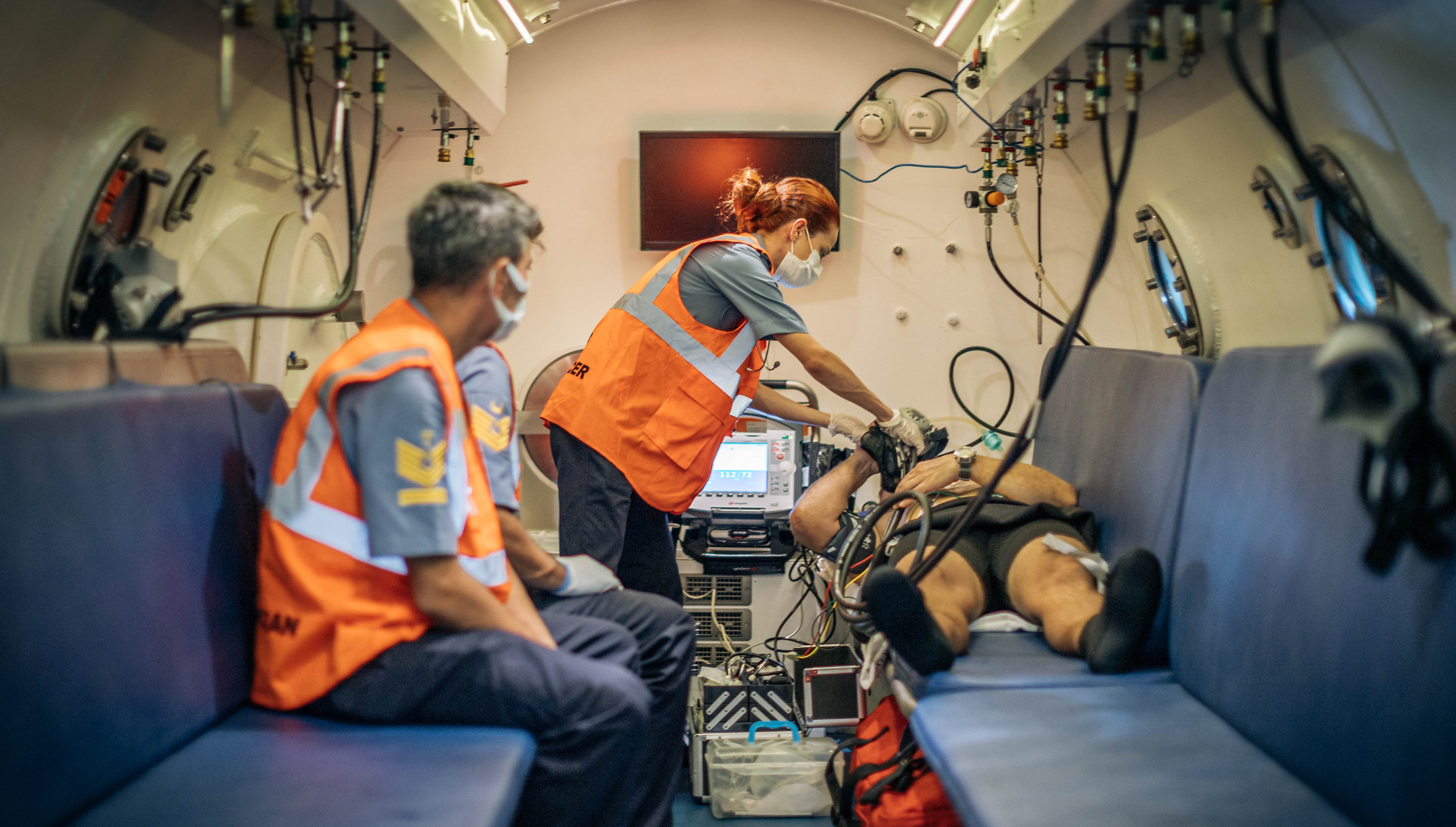
DM exercises typically alternate between warm and cold waters, (DM 21 took place in the eastern Mediterranean), although DM 24 is the first frigid-water exercise for ten years. In this regard, Norwegian Navy Commodore Kyrre Haugen, Chief of the Naval Fleet, commented that as Norway’s allies ‘get better’ at conducting submarine rescue operations in colder climates, “they also get to know our waters. NATO should be prepared to work together towards saving submariners in danger, no matter the area, or what nation the submarine belongs to”.
Of DM 24, US Navy Rear Admiral Bret Grabbe, Commander, Submarines NATO, added that the exercise underscored the importance of international cooperation in ensuring all nations are prepared to respond swiftly and effectively to submarine emergencies, with the skills and experiences gained during DM 24 significantly contributing to Alliance naval interoperability and cooperation in sub rescue and other maritime security initiatives.
Tapping into NSRS expertise and insights
And perhaps the most important system of all, exercised during DM 24, was the NSRS, government-owned by the three aforementioned, participant nations, though operated by specialist civilian contractors, including current prime contractor, JFD, in the UK.
For some latest strategic-level, submarine-rescue insights, including about exercises and training, European Security and Defence/Maritime Defence Monitor spoke with JFD’s product manager submarine escape and rescue systems, Stuart Irwin, who informed this magazine of a growing focus on submarine rescue among navies. This, he said, was partly driven by recent incidents, which have highlighted the importance of safety and the need for a robust rescue plan, but also, in part, due to a recent pivot back to maritime operations and the fact there are currently more submarines operating around the world than ever before. The strategic importance of submarines in both defence and deterrence, especially with new initiatives such as AUKUS, has reflected increased investment and infrastructure support from governments, which transfers to submarine rescue. There is also a continued emphasis on safety, rapid response and international cooperation, he added, as submarine operating ranges and coverage areas expand, driving innovation and enhanced capabilities. For JFD over the past few years, this has driven the completion of multiple new SRV builds and continuing to conduct exercises as part of its long-term, in-service-support contracts. Indeed, the company has now delivered a further three 3rd-Generation SRVs to customers in the Asia-Pacific Region, with focus on such things as improved control systems and navigational instruments; these deliveries have significantly increased the regional rescue capability, from the Sea of Japan to the South China Sea.
For existing-generation SRVs, Irwin said the company continues to work on enhancement packages to address capability gaps or potential obsolescence issues, including such things as fibre-optic communications system upgrades to enable and/or improve audio and visual communications between the SRV, the dive supervisor, and the bridge commander, thereby enhancing command and control during any rescue; other enhancements include introducing a submariner medical monitoring system, which combines wearable devices, integrated with an array of medical health monitoring equipment and communications to allow comprehensive supervision of all rescued parties throughout the duration of a rescue incident and subsequent treatment.
“Exercises are critical to ensuring both personnel and equipment are fully prepared for real-life rescue operations,” Irwin told this magazine. “Regular exercises help validate and refine procedures, as well as improve efficiency, reducing mobilisation times and enhancing coordination between international partners.” He said that over the last five years, the company has conducted over 25 exercises under the terms of the global in-service-support contracts it manages.
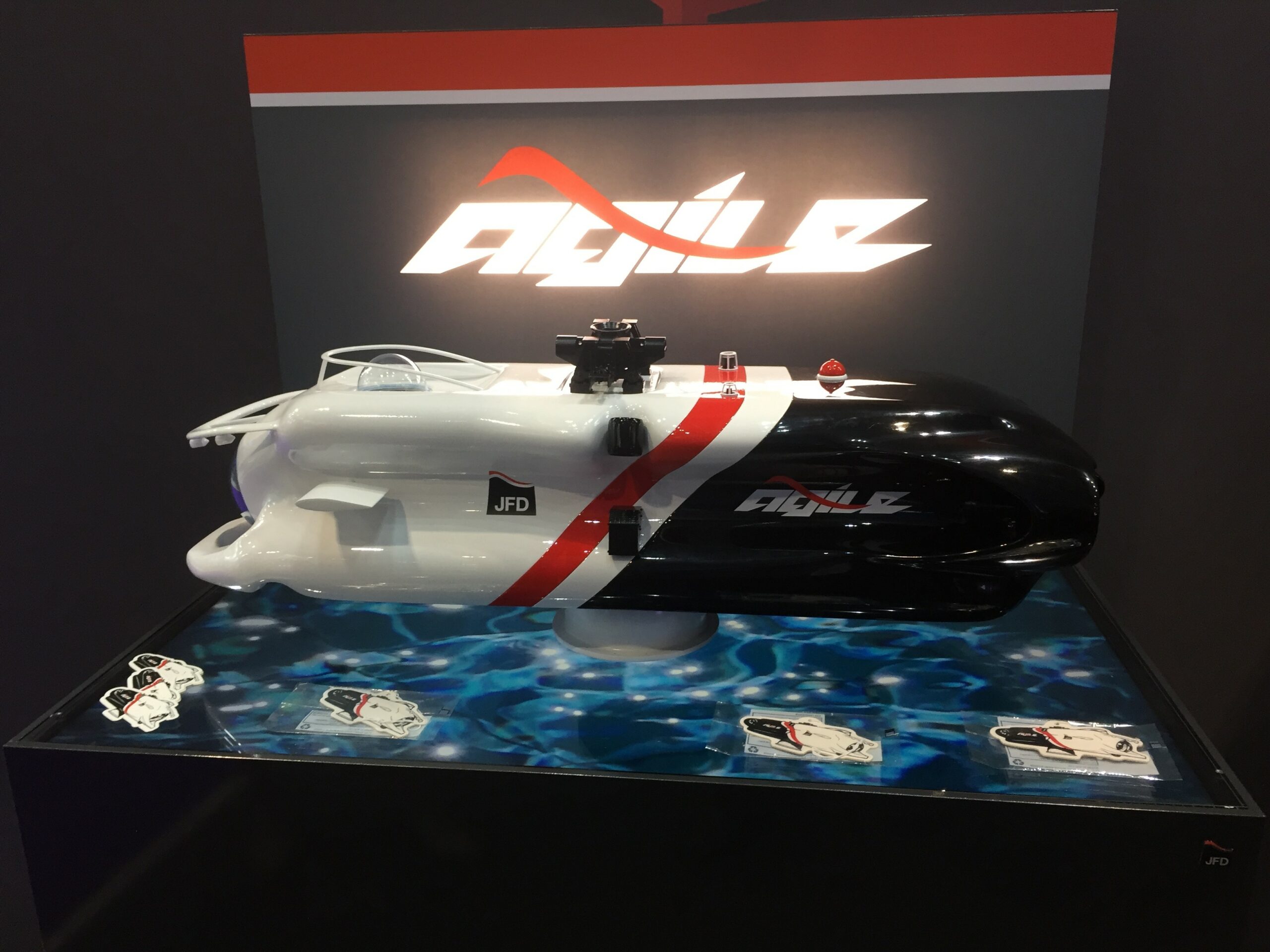
New generation
Having recently introduced its yet-to-be-built, 4th-genertion SRV to the sector, Irwin said of its earlier-1st, 2nd and 3rd-generation systems that a total of seven have been delivered, globally. “Each generation has been built with longevity in mind and thanks to the ability to continually upgrade and integrate new technology, our first-generation system is still operational and one of the most capable systems in service today.” Irwin added that with each new generation there is an obligation to improve.
“Our future generations are built on the proven designs of the past; building on this legacy, our 4th-Generation SRS – Agile – optimises transportability, through its modular configuration and simplified vessel interface, in turn reducing the complexity of the mobilisation process, in turn reducing TTFR.” Agile was officially launched at CNE 2023 and later at DSEI 2023 where ESD was given a preview. The company sees the near and mid-term global market potential for the new system driven by such things as the need to replace ageing SRVs, as well as navies with new requirements to support their increasing submarine fleets. Irwin indicated that strong interest in Agile from multiple potential customers has already been expressed. He said the 4th-generation system, once in build, will undergo the same intensive testing and acceptance routines as previous SRVs, including Factory Acceptance Trials (FATS), involving testing at sub-system level using test rigs, pressure chambers and test tanks; Harbour Acceptance Trials (HATS) , involving local, in-water testing of systems in a controlled environment, allowing progressive systems integrity checks and functional testing; and finally, Sea Acceptance Trials (SATS), involving full system deployment at sea, allowing full system capability checks to be conducted at full depth and under typical operating conditions. This normally includes actual interfacing with customer submarines and practice targets.
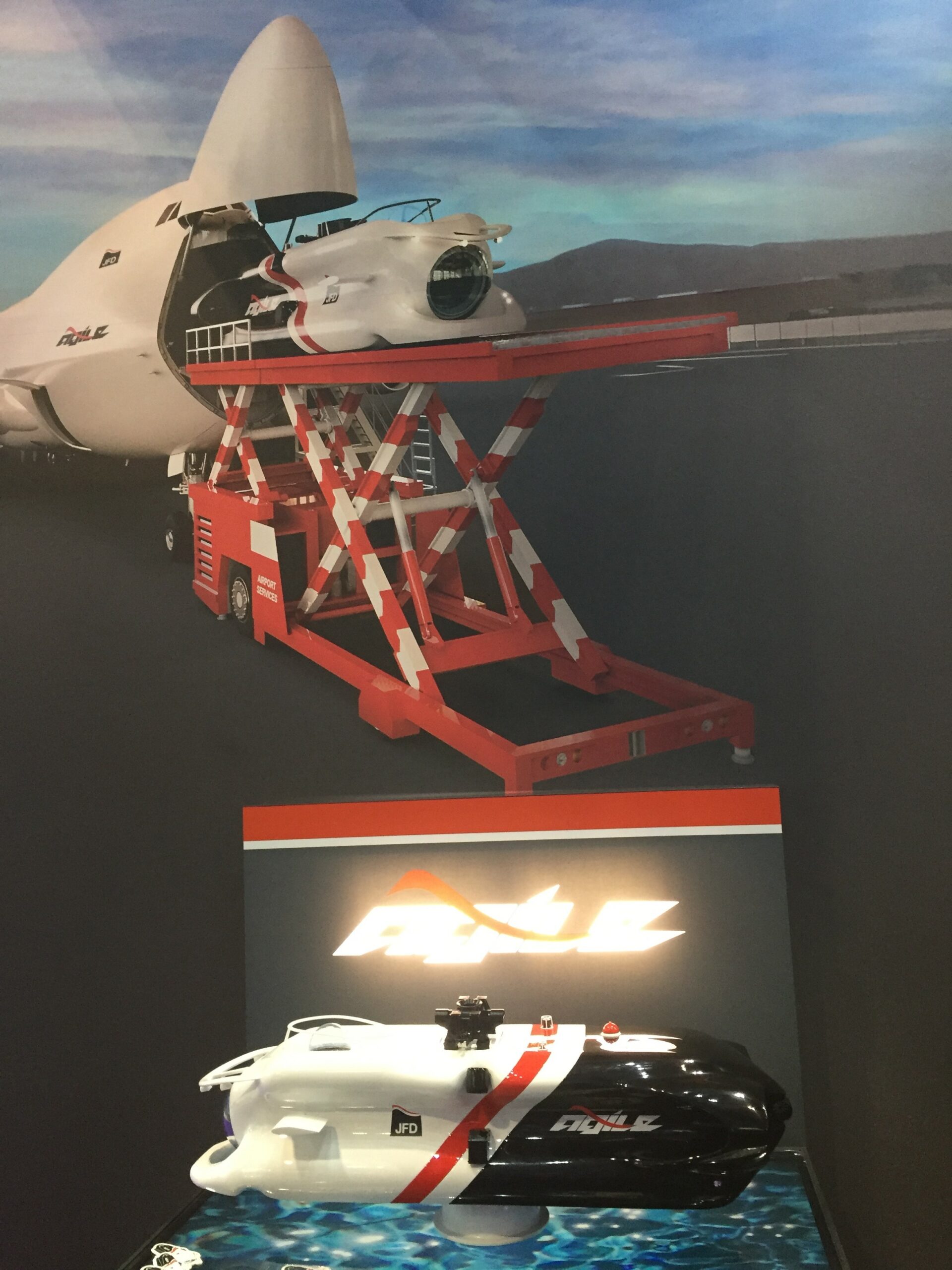
Agile has a fully redundant Programmable Logic Controller (PLC)-based navigation and control system; it incorporates the latest navigational instrumentation, such as sonar, pinger/receiver, controlled time of departure (CTD) device, doppler velocity log (DVL); its depth capability is dependent on customer requirements, but typically extends to 500–650 metres of sea water. This 4th-generation vehicle also has an increased payload capacity, from 17 up to a possible 22 people in the rescue chamber, without external dimension expansion or weight increase; it also has a next-generation fibre-optic link for enhanced communications and live video stream, as well as a new deployment/recovery system. New power and control elements for better manoeuvrability and handling in high sea/current states have also been incorporated.
According to JFD’s Irwin, no other company has yet released a 4th-generation SRS design. He added that supporting the mobilisation and operation of a submarine rescue and intervention system is a significant endeavour with a wide number of logistical challenges. “Our main design driver is to reduce the TTFR. With limited hours of life support remaining on board a submarine following a distress call, the ability to get a system on location becomes the top priority.” Focusing on this, he said that while the support and logistics process is fundamentally the same as for earlier generations, JFD’s 4th-generation system’s transportability options, reduced interfaces and modular design have enhanced its fly-away capability beyond those of previous-generation systems, ultimately improving the chances of reducing the TTFR. And although existing systems and contracts will remain unchanged, 4th-generation technology upgrades, enhanced procedures, best practice and technical understanding will all be transferrable to the ongoing service contracts maintained by the company.
As for the NSRS, the existing operational model with one SRV, will continue to operate and JFD will continue to support partner nations as per its current contract. “The NSRS must be kept at a high state of operational readiness,” Irwin said, “in order to deliver an effective and available submarine rescue capability to the participant nations. We’ve successfully maintained its availability at a 98% level.”
An Indonesian footnote
One recent sub-rescue tie-up beyond the NSRS was announced at DSEI in September 2023 by UK company, Submarine Manufacturing and Products (SMP), in the form of a USD 100-million, three-year-build contract with the Indonesian Government, for the supply of SMP’s new SRS, incorporating the SRV-F Mk3 rescue submersible, to the Indonesian Navy. In turn, the navy will host the SRV aboard a new MOSHIP, currently being designed by independent engineering consultancy, Houlder. Once completed, the ship will be delivered to the navy by BTI Defence, Houlder’s strategic, regional Indonesian partner, and the SRS, when complete, to the ship.

For the Indonesians, Major General Mohammad Fadjar, MPICT, Director General for Defence Potential at the Indonesian MoD, said: “The realisation of this SRV project marks a new era for the Indonesian Navy in terms of acquiring this critical capability.”
In a statement, SMP said its SRS will be UK-designed and manufactured, while construction of the custom-built MOSHIP will take place in region, along with associated training for the navy’s submarine-rescue stakeholders. It also said that as a hybrid system capable of deployment to a DISSUB event, either by air, or aboard its MOSHIP, the SRV-F Mk3 can minimise TTFR by reaching a wide range of emergency scenarios across large operating areas. An air-deployed SRV-F Mk3 can also be towed to and from a DISSUB without the need to be handled by a dedicated MOSHIP; the company says “this approach avoids the integration challenges and dependencies associated with flyaway-only, or mothership-only rescue systems”. Of its other capabilities, the company statement said the Mk3 can operate at depths of 500 m and carry up to 50 stranded submariners at a time, potentially rescuing all crew members from a DISSUB at once, rather than having to make repeated, dangerous trips. Its new mothership will incorporate a handling system, an advanced TUP system, and a dedicated decompression chamber, so that immediate medical attention and treatment can be provided to rescued personnel.
While celebrating the contract with colleagues on his stand at DSEI 2023, SMP’s MD, Ben Sharples, told European Security and Defence/Maritime Defence Monitor that the company had recently changed ownership and the new management team had been instrumental in delivering both this win and coming up with an SRV design to meet all the submarine-rescue needs of the Indonesian – and other navies – for years to come, particularly at a time of heightened geopolitical tensions in the waters around the massive archipelago of Indonesian islands and contested waters of the South China Sea.
Worth noting that the deal was announced two and a half years after the loss of the Indonesian Navy’s KRI Nanggala-402, a West German Cakra class, Type U-209/1300 model submarine, with 53 lives lost. This tragedy will, without doubt, have been the major impetus behind the navy’s drive to acquire an advanced sub-rescue solution, as part of attempts at wider fleet improvements and modernisation.
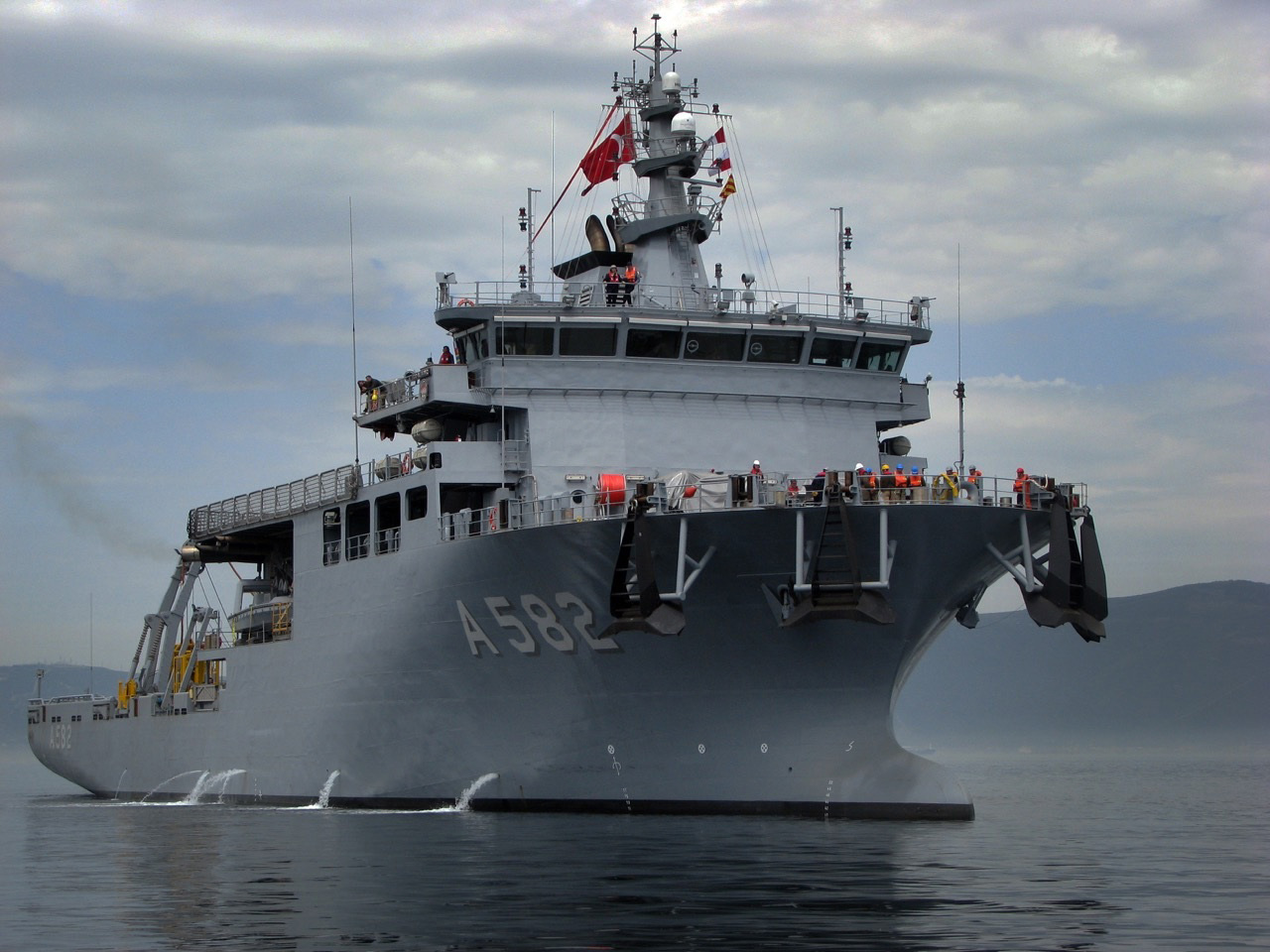
Last word
While submarine rescues are, thankfully, relatively rare occurrences, knowing that proven, pioneering equipment, as well as the very latest submarine rescue technologies are available, are constantly being improved, and are operated by highly skilled and trained teams and personnel, must surely give solace to submariners who have, at the backs of their minds, the ever-present prospect that they might, one day, find themselves stranded aboard a disabled submarine, at the bottom of the sea.
Tim Guest
Author: Tim Guest is a freelance journalist, UK Correspondent for ESD, and a former officer in the British Armed Forces.






